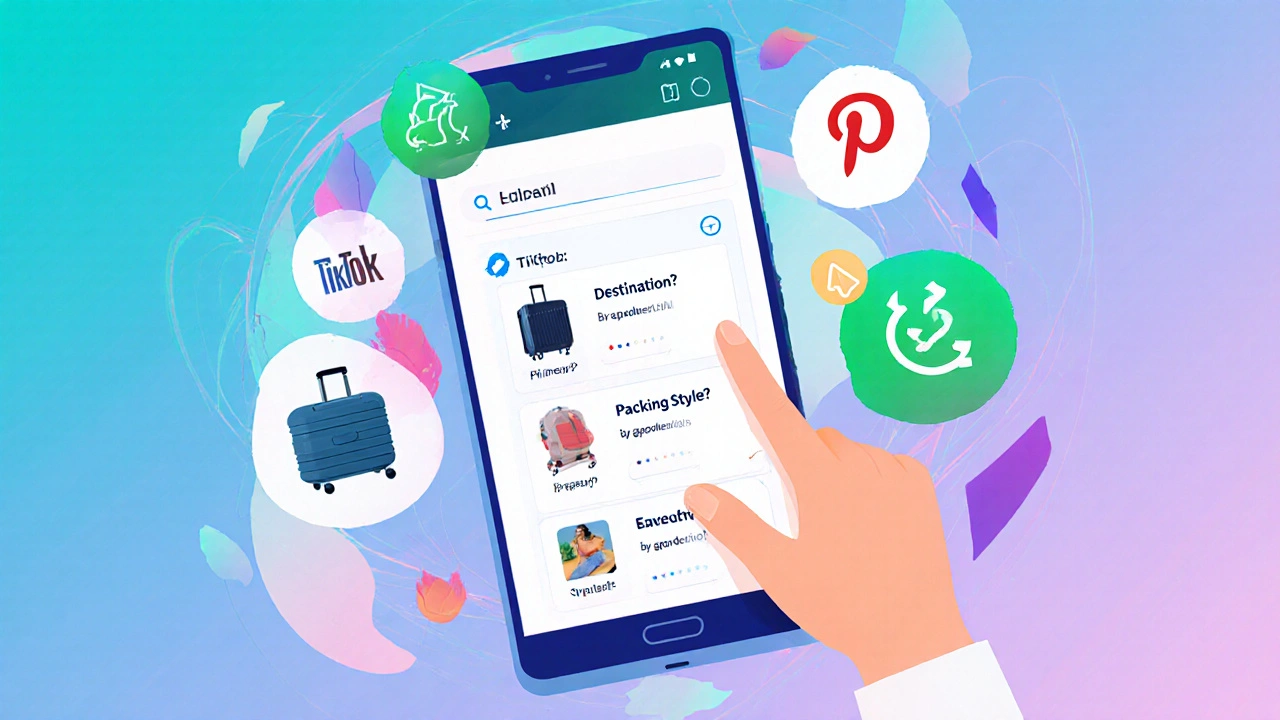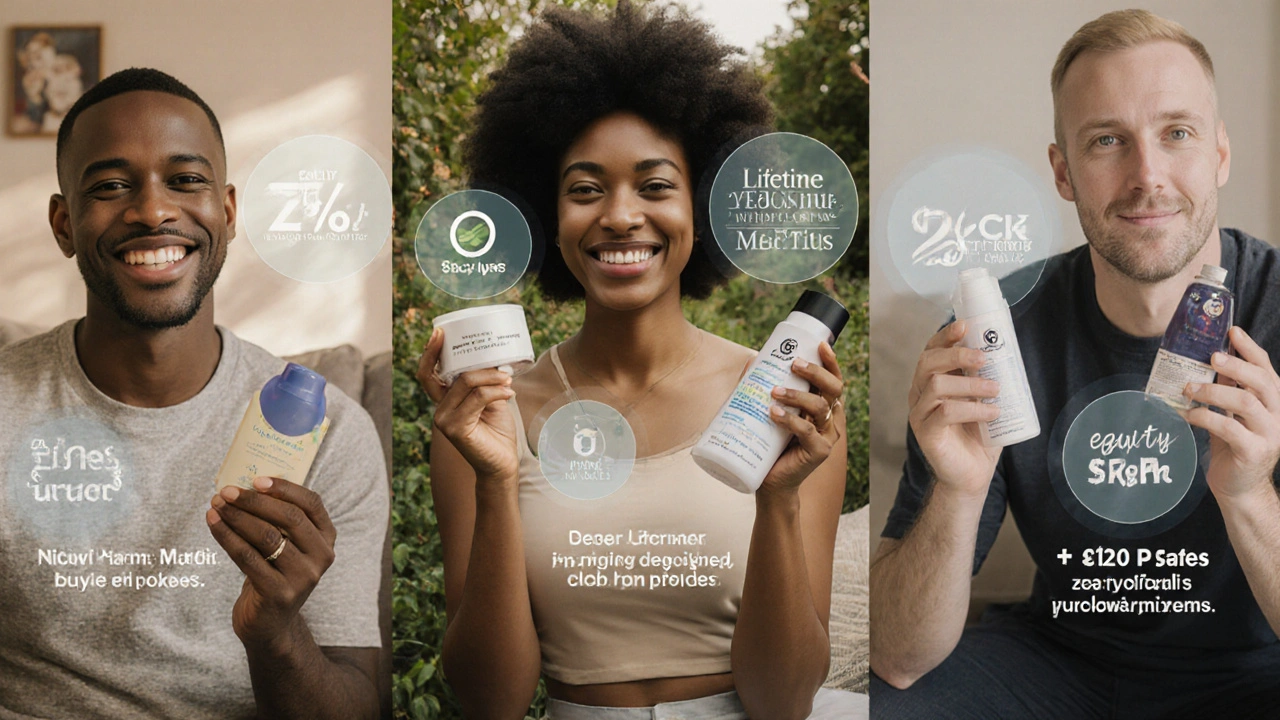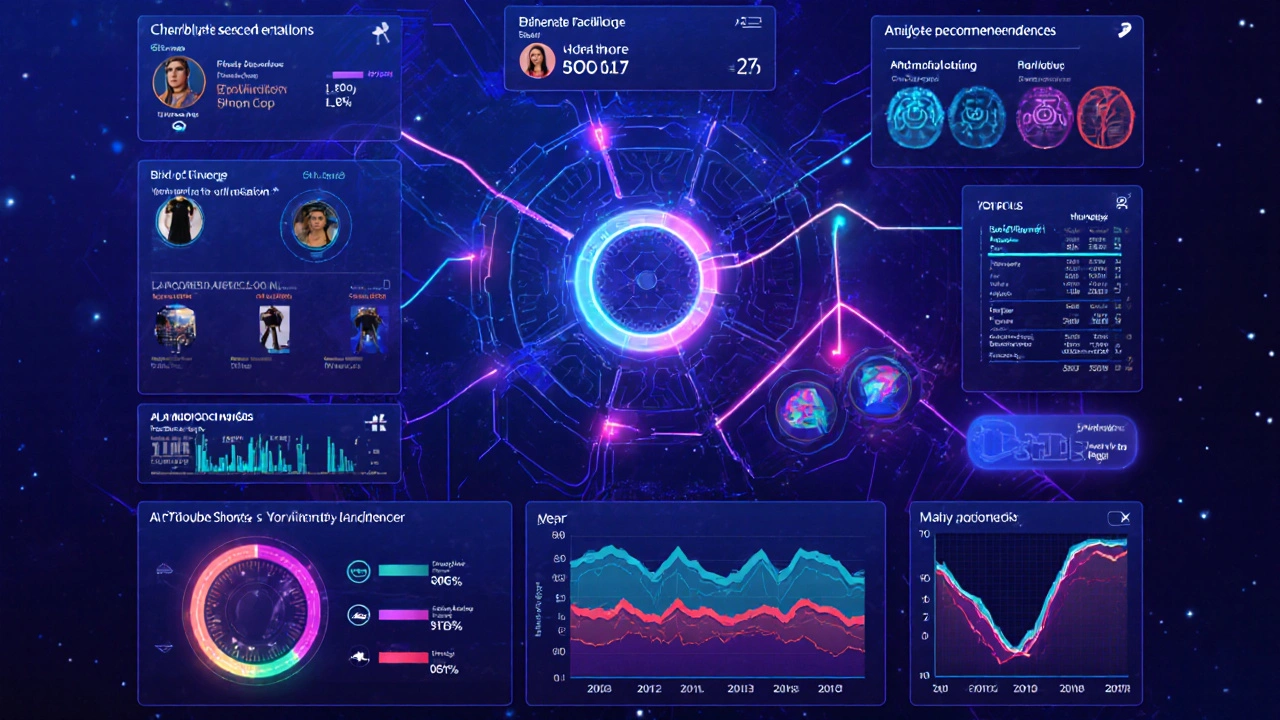Affiliate Product Recommendation Calculator
Create Your Personalized Product Recommendation Tool
Calculate which products convert best for your specific audience based on real-time AI insights. Input your target audience details to get actionable recommendations.
Your Audience Profile
Recommended Products
Top Recommendations
Product #1
High-conversion product for your audience
+42% CTRProduct #2
Best for your budget range
+37% ConversionProduct #3
Highest customer lifetime value
+51% RetentionPlease select all fields to see recommendations
Pro Tip: According to the article, interactive content like this can increase conversion rates by 50% or more. Use this tool to create personalized product experiences for your audience.
What’s Really Changing in Affiliate Marketing Right Now?
Five years ago, affiliate marketing meant posting links on a blog and hoping for clicks. Today, it’s a multi-channel, data-driven engine powered by AI, influencer trust, and real-time optimization. If you’re still relying on generic product banners and cookie-based tracking, you’re already behind. The game has shifted - and the winners are those who adapt fast.
AI Is No Longer Optional - It’s the New Core
Artificial intelligence isn’t just helping affiliates; it’s running entire campaigns. Platforms like Impact, ShareASale, and even Amazon Associates now use AI to predict which products will convert best for specific audiences. You don’t need to guess what your audience wants anymore. AI analyzes browsing behavior, past purchases, even time of day and device type to serve hyper-relevant offers.
For example, an affiliate promoting fitness gear might see that users who watch 10-minute YouTube shorts about home workouts are 3x more likely to buy resistance bands than protein powder. That’s not luck - that’s machine learning. Affiliates who use AI tools like Jasper, Anyword, or even ChatGPT to generate personalized product descriptions and email sequences are seeing 40-60% higher click-through rates.
Content Is Still King, But It’s Now Interactive
Static blog posts are dying. People don’t want to read another ‘Top 10 Weight Loss Supplements’ list. They want to try before they buy. The most successful affiliates now build interactive content: quizzes, calculators, live demos, and configurators.
Take a travel affiliate: instead of writing about the best suitcases, they create a ‘Which Suitcase Fits Your Trip?’ tool. Users answer three questions - destination, duration, packing style - and get a personalized recommendation with affiliate links embedded. Conversion rates jump by 50% or more. This isn’t just content marketing. It’s experience marketing.

Influencers Are Becoming Brand Partners - Not Just Promoters
The days of micro-influencers slapping a discount code on a selfie are fading. Now, top performers are signing long-term contracts with brands. They co-design products, appear in ad campaigns, and even get equity stakes. In return, they get creative freedom and deeper audience trust.
On TikTok and Instagram, affiliates who build niche communities around real problems - like ‘Budget Parenting Hacks’ or ‘Eco-Friendly Home Swaps’ - are outearning those with 100K followers but no niche. Authenticity beats reach every time. Brands now pay influencers based on customer lifetime value, not just one-time sales.
Mobile-First, App-Driven, and Zero-Click Sales
More than 70% of affiliate traffic now comes from mobile devices. But here’s the twist: users aren’t clicking links anymore. They’re discovering products inside apps - like Pinterest’s shoppable pins, TikTok’s in-feed product tags, or even WhatsApp chatbots that send personalized deals.
Brands are integrating affiliate links directly into their apps. Imagine a user browsing a fitness app, seeing a recommended protein shaker, tapping ‘Buy Now,’ and the affiliate gets credit - no landing page, no cookie, no redirect. This is called ‘zero-click affiliate marketing.’ It’s faster, smoother, and harder to track - which means affiliates need to partner with platforms that offer transparent attribution via API.
Regulation Is Tightening - And That’s a Good Thing
The UK’s Advertising Standards Authority (ASA) and the FTC in the US are cracking down on undisclosed affiliate links. If you’re not clearly labeling sponsored content with #ad or #affiliate, you’re risking fines and losing trust.
But here’s the upside: transparency builds credibility. Audiences now prefer brands and affiliates who are upfront. A study from 2024 found that 68% of consumers trust affiliate recommendations more when they see a clear disclosure. So instead of hiding your links, own them. Say: ‘I tested this for 3 months - here’s what I really think.’ That honesty turns followers into loyal customers.

Performance Marketing Is Eating Traditional Advertising
Brands are shifting budgets away from TV and display ads and into performance-based channels. Why? Because they only pay when someone buys. Affiliate marketing is now the backbone of e-commerce growth for companies like ASOS, Sephora, and even Shopify merchants.
In 2025, over 15% of all online sales in the UK came through affiliate partnerships. That’s up from 8% in 2020. The biggest growth? Small and mid-sized brands using affiliate networks to scale without big ad spends. If you’re an affiliate, your best opportunity isn’t with Amazon - it’s with emerging brands looking for their first real sales channel.
What to Do Now - 3 Action Steps
- Test one AI content tool this week. Use it to rewrite your top-performing product review. Track clicks for 14 days.
- Create one interactive tool - even a simple Google Form quiz. Link it to your top 3 products. Measure conversions.
- Reach out to 3 niche brands you genuinely use. Propose a partnership. Offer to create a tutorial or demo video. Don’t ask for money - ask for access to their product and affiliate dashboard.
Who’s Winning in 2025?
The affiliates who win aren’t the loudest. They’re the most helpful. They’re the ones who solve problems before the customer even asks. They use AI to personalize, not to spam. They build trust through transparency, not tricks. And they’re not chasing viral trends - they’re building long-term relationships with audiences who keep coming back.
If you’re reading this, you already know affiliate marketing isn’t dead. It’s evolving. The question isn’t whether you should be in it. It’s whether you’ll evolve with it.
Is affiliate marketing still profitable in 2025?
Yes - but only if you adapt. The low-effort, spray-and-pray model is dead. Affiliates who use AI, build interactive content, and focus on niche audiences are earning more than ever. Top performers make $10,000-$50,000/month by targeting specific problems with tailored solutions. It’s not about volume anymore - it’s about value.
Do I need a website to do affiliate marketing?
Not anymore. You can earn through TikTok, Instagram Reels, YouTube Shorts, WhatsApp, or even Pinterest. But having a website gives you control. It’s your hub for SEO, email lists, and long-term audience building. Most top affiliates use a mix: social media to attract, a website to convert.
What’s the best affiliate network for beginners?
Start with Amazon Associates if you’re testing the waters - it’s easy to join and has millions of products. But for better commissions and niche control, try ShareASale, CJ Affiliate, or Impact. These platforms connect you with smaller brands that pay 10-30% commissions, not just 1-4%. Look for networks that offer real-time tracking and API access.
How do I track my affiliate earnings accurately?
Use UTM parameters for every link you share. Combine that with a free tool like Bitly or Pretty Links to track clicks. For sales, rely on your affiliate dashboard - but don’t trust it blindly. Cross-check with Google Analytics to see if traffic matches conversions. If there’s a mismatch, your tracking might be broken. Many affiliates lose money because they assume the platform’s numbers are perfect.
Can I use AI to write my affiliate content?
Absolutely - but don’t publish it raw. Use AI to draft, then rewrite it with your voice. Add real experiences: ‘I tried this for 3 weeks and my skin broke out,’ or ‘My dog hated this leash - here’s why.’ AI can’t replicate honesty. The best affiliate content sounds like a friend who’s been there - not a robot summarizing a product page.


I work as a marketing specialist with an emphasis on the digital sphere. I'm passionate about strategizing and executing online marketing campaigns to drive customer engagement and increase sales. In my free time, I maintain a blog about online marketing, imparting insights on trends and tips. I'm dedicated to life-long learning and look forward to growing in my field.